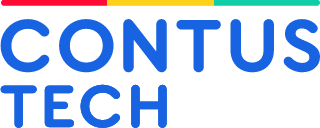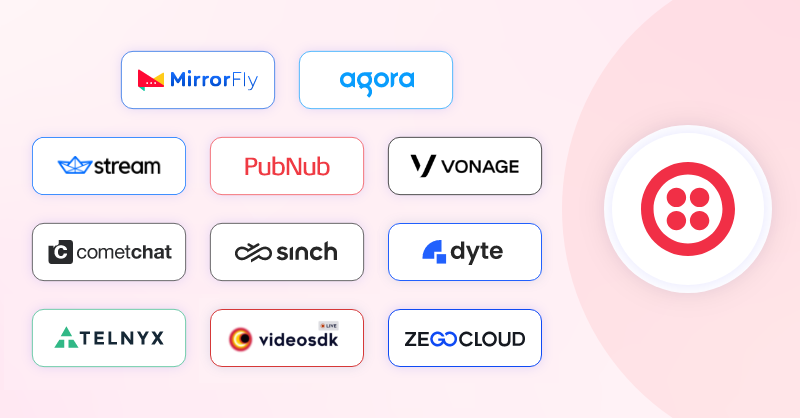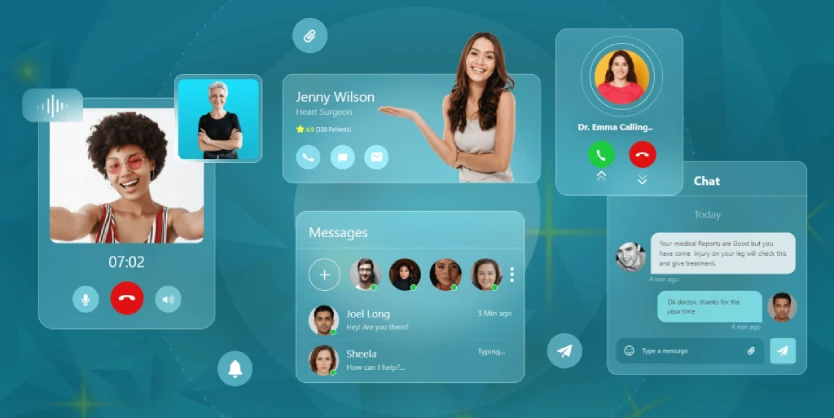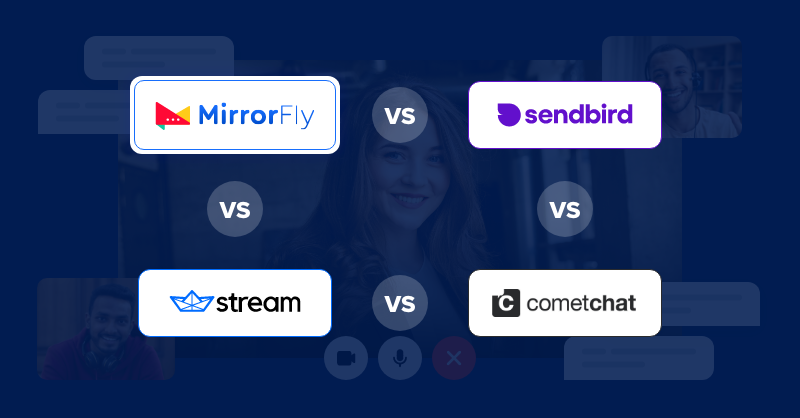How Is Digital KYC Benefiting Different Communication Sectors?
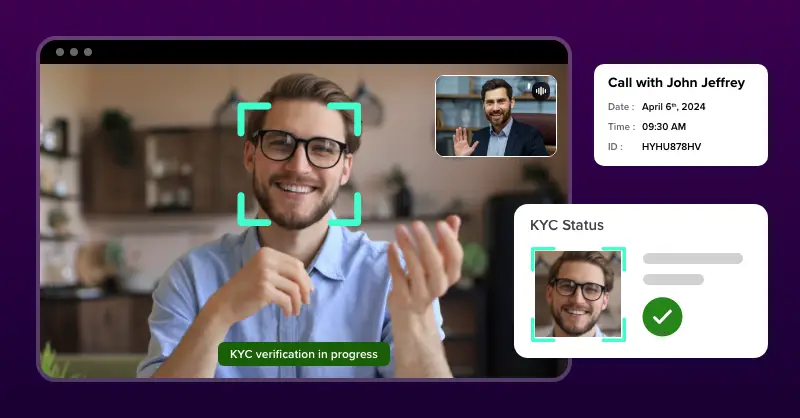
“Did you know that the most common problem faced by any sector is customer onboarding and to our surprise, banks spend $100 million annually on it?”
Well, yes, and despite such a hefty amount spent, manual KYC processes or manual onboarding is error-prone, slow, non-transparent, and risky. And that’s where digital KYC or video KYC comes as a savior.
But how is it possible? With the help of digital communication. It has not only revolutionized the way customers and agents communicate but has enabled businesses to comply with their KYC docs as well.
So, in the blog below, we will see how businesses like you can benefit from video-based KYCs and deliver smooth real-time communication experiences.
Table of Contents
What Does KYC Mean?
KYC means Know Your Customer or Know Your Client is a process used by businesses to verify the identity of their customers during onboarding. It is majorly used to prevent money laundering and fraudulent acts on business grounds.
And so, companies collect clients’ personal information like name, DOB, address, and other photo-ID documents for verification purposes.
While the KYC concept is widely used across different use cases, its usage is mandated in the banking sector.
As a result, several third-party providers who offer SDKs for enabling real-time communication in banking apps, make sure to bring in KYC APIs for completing the onboarding process.
What is Digital KYC?
Digital KYC or simply e-KYC is an online mode of verifying the identity of customers through diverse digital tools like video KYCs, secure messaging, voice calls, and more.
In India, digital KYC is done through Aadhar authentication.
But is video-based KYC the only digital mode of verifying users? Well, we will answer this question in the below section.
How can Digital Communication Support KYC Verification?
Digital communication is known to greatly support the KYC process by offering different channels for identity verification like video KYCs, electronic signatures, biometric authentication, instant messaging, and several others.
Plus, with digital KYCs, customers can verify their identity remotely and stay transparent as to what the process is. This in turn elevates the overall customer experience.
Now we will see a few highlights that prove the benefit of digital communication in KYC.
- Information is securely collected from users via emails, text, and forms.
- Digital communication also monitors user activity thereby preventing any fraudulent attacks.
- By doing digital KYCs, customer data stays up-to-date. And in case any updates are required, agents get notified instantly.
- Agents can remotely verify user identity through several integrated features like chats, video calls, and file sharing.
So these points prove that digital communication tools help businesses stay compliant with KYC regulations.
What Are The Benefits Of A Video KYC Solution?
Leading KYC software solutions help companies complete the verification process. However, the most beneficial and liked tool by agents around is video KYC. So why is it liked a lot?
Here are a few advantages that video KYC gives to companies:
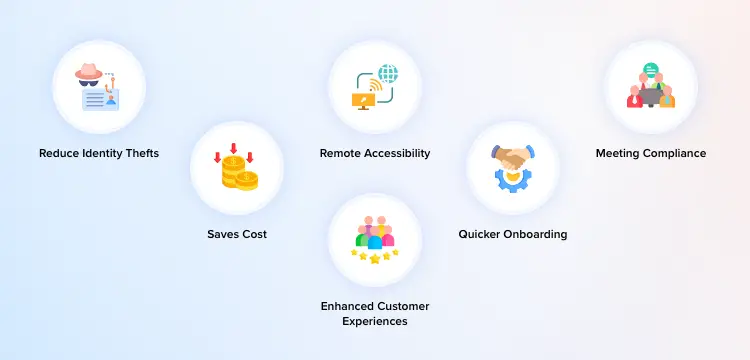
- Reduce Identity Thefts: As video KYC verifies the identity of the client or customer in real-time, it reduces fraud and identity theft.
- Enhanced Customer Experiences: With live video calling services, customers can connect with institutions and banks from the comfort of their homes rather than going to banks in person.
- Saves Cost: As the entire process is done online, labor and physical infrastructure costs are reduced.
- Remote Accessibility: People who are disabled or located at remote locations can engage in 1 on 1 video calls to complete the verification process or open accounts.
- Quicker Onboarding: By integrating KYC APIs into communication apps, customers can fill in their details and attach documents thus fastening the onboarding process.
- Meeting Compliance: Due to digital KYC solutions, organizations can quickly update customer documents and meet their compliance standards.
So these were the benefits of using a digital KYC.
How Does Video KYC Work?
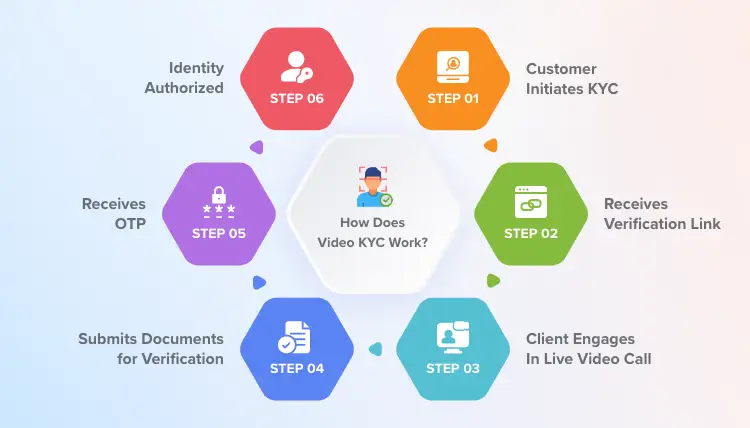
Here’s how video KYC works:
- Client or customer initiatives the KYC process through any real-time chat app or business’s website.
- The business sends them a link to join the video call for verification purposes and assists them in adding the required documents.
- The customer engages with officials in a live video call who would guide them about the KYC procedure.
- Clients may have to submit their required photo ID documents and agents may check through call whether the document matches with the identity of the caller.
- At times, customers may receive OTP for authentication purposes.
- The video KYC procedure is recorded for compliance needs.
How MirrorFly’s Video SDK Help Meet KYC Needs?
MirrorFly is a leading SDK provider of in-app video, voice, and chat capabilities that is also much-liked by developers around for its faster integration, smooth migration, 1000+ call and chat features, and twin communication model – SaaS and SaaP.
Plus, by using our video SDKs, you can add advanced real-time video calling features like 1-1 video chat, group video calls, file sharing, and more in less than 10 minutes to complete the KYC verification process.
Trust me these ain’t all, as we also offer
- APIs and SDKs for diverse use cases like healthcare, banking, e-commerce, dating, and social domains.
- Self-hosted video SDK that gives businesses complete control of hosting apps and data. And give them an option to brand their chat apps reflecting their identity on all pages.
- Robust security mechanisms like E2E, and AES, and stay compliant with regulatory standards like GDPR and HIPAA.
- Multi-platform support.
- Dedicated tech developer to look after the integration process.
- Contact center APIs for smoother agent-customer interactions.
Conclusion
To put it in a nutshell, using in-app communication tools like 1-1 chats, video calls, and other methods, businesses can improve their customer onboarding and verification process more simply.
And just not these, digital communication indeed helps financial institutions and other industries monitor threats and suspicious activities.
Therefore, opting for digital KYC or e-KYC mode has proved to improve operational efficiency in the best way possible. If you liked our post, give a thumbs up at the top. Till then bye!!
Get Started with MirrorFly’s Secure Video KYC Solution!
Drive 1+ billions of conversations on your apps with highly secure 250+ real-time Communication Features.
Contact Sales200+ Happy Clients
Topic-based Chat
Multi-tenancy Support

Frequently Asked Questions (FAQs)
What is the API in KYC?
API, in general stands for Application Programming Interface that allows apps or software to communicate with each other in integrating KYC services to various apps or platforms.
Plus, these KYC APIs can be integrated to any government DBs or ID verification services that prevent money laundering.
What is video KYC?
Video KYC also known as Video Know Your Customer is a method of checking the identity of customers remotely using video calls. Mostly, this approach is followed by businesses and bank institutions to verify customer ID thus preventing fraud. Here’s how it works:
1. Call Initiation
2. Document submission
3. ID verification
4. Interaction and approval
How is API used in banking?
APIs (Application Programming Interfaces) are extensively used in banking to add seamless communication and payment related services between various software applications and systems.
Plus, it plays a crucial role in improving customer experience by offering convenient banking services like balance check, payments, transactions, fund transfer, and more.
Is video KYC safe?
Video KYC is usually considered safe due to reasons like:
1. Encryption of communication channel
2. Verifies identity of customers using government-issued cards.
3. Complying with stringent regulations
4. Various authentication measures
5. Obeying data protection laws like GDPR and HIPAA.
What is the future of video KYC?
The future of video KYC looks great and promising especially due to technological advancements. Plus, with advancements in AI and biometrics too will help boost its usage thus proving the approach to be secure and efficient.
Further Reading
